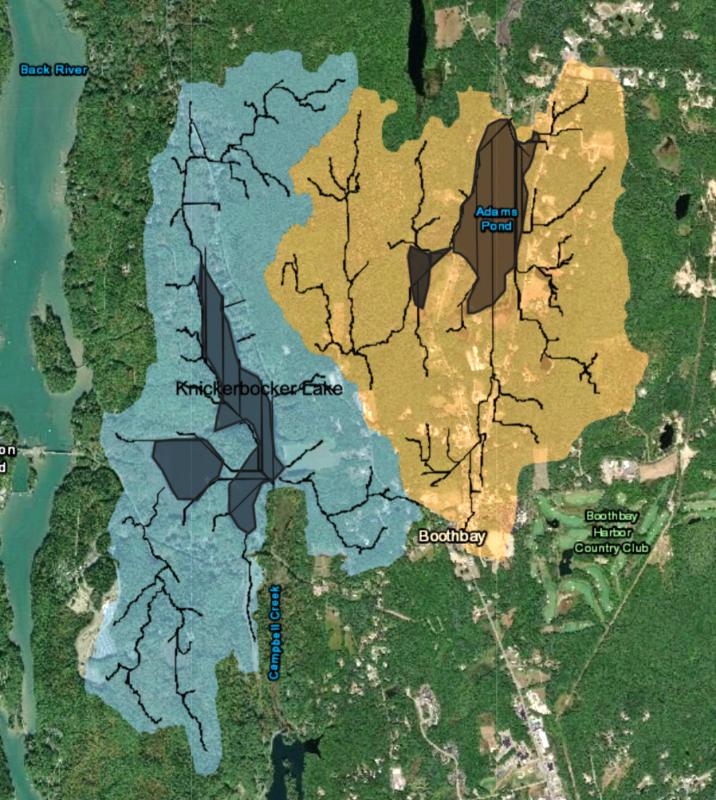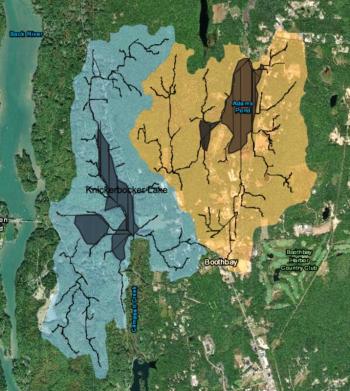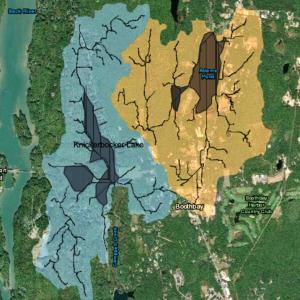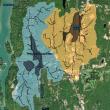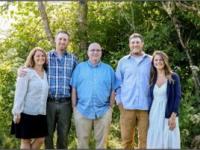Regional pipeline part of BRWD long range water plan
As manager, Jon Ziegra isn’t only responsible for Boothbay Region Water District’s daily operation. He also must plan to ensure the district’s 3,300 customers in Boothbay, Boothbay Harbor and Southport have a future reliable drinking water source. When Ziegra arrived in Boothbay in 1999, he assessed how the current sources, Adams Pond and Knickerbocker Lake, would support the region into 2050, based on population growth figures.
But the timetable has sped up recently due to more rapid population growth and accelerated even further more recently by the coronavirus. In the past year, Ziegra has seen an estimated growth of four to six new customers per month and now forecasts 2040 as the likely date for an additional water source. “We will become tight with water in the foreseeable future,” he said. “You can see the growth now with people looking to come here to live. With technology, you can work in San Francisco, and live here. The Boothbay region is ripe for growth.”
As the region grows, so does demand for drinking water. In 1999, Ziegra identified an additional water supply as a major priority for the district. A potential source is the Bath and Brunswick-Topsham waters systems. In 2010, Boothbay and Wiscasset became charter members of Five Rivers Regional Water Council which includes Great Salt Bay, Bath, and Brunswick-Topsham water districts. The council works on regional water issues.
While water may become scarce in the Boothbay region in a couple decades, a new $35 million treatment facility in Topsham has the potential to produce six million gallons per day and become a possible future source for additional Boothbay drinking water, according to Ziegra.
“(The Boothbay region is) growing, as is the whole Midcoast. We need to look at how we deliver water as six different entities, and I wouldn’t be surprised in 20 years, we would be one,” he said.
Connecting the Boothbay region to the Brunswick-Topsham treatment center is a possible solution to the Boothbay Region’s future drinking water dilemma. Such a connection would require a pipeline. In 2008, Wiscasset Water District began replacing its century old infrastructure. The 10-year project replaced water mains and increased storage capacity, water reliability and quality. The project also ran pipe to Bath and installed a boost pump station.
For Ziegra, this made a possible water connection between Boothbay and Topsham even closer. BRWD could link to the Topsham treatment center via Wiscasset Water District. A pipeline running from Route 27 and U.S. Route 1 would connect the Boothbay Region and Wiscasset water districts. There are two possible ways to connect the two water systems. Boothbay could seek a state easement for constructing a pipeline or seek assistance from Edgecomb.
There is no municipal water utility in Edgecomb, and only Davis Island is connected to public water and sewer. In 2004, Davis Island developers received approval to connect their townhouses to the Wiscasset system. But joining a quasi-municipal government entity, like a water district, isn’t easy. First, the developers need legislative approval. Second, Edgecomb voters must approve the expansion and that must be followed by a similar vote by Wiscasset and Woolwich voters who belong to Wiscasset Water District.
Periodically, Wiscasset Water Superintendent Chris Cossette meets with Edgecomb selectmen discussing various issues related to Davis Island. “I have brought up the advantages of the entire town joining the water district. (U.S.) Route 1 and 27 are prime locations for economic development. The fire department and schools could be connected to municipal water as could residences,” he said.
In June, Edgecomb selectmen wanted to hear more about joining the Wiscasset district, and how it would impact Boothbay Region’s expansion plans. On June 2, Cossette and Ziegra met with the three selectmen. One unanswered question was who pays for connecting a pipeline to Boothbay. Ziegra has gauged potential costs for years, and estimates the project would cost approximately $28 million.
Cossette believes the best funding mechanism includes state, federal, local and other public and private partnerships. “You look at who the stakeholders are. I think an assortment of stakeholders would participate in the project because it benefits so many,” he said.
If Edgecomb decided to allow expansion, it would follow the same steps as when Davis Island joined. Cossette cautioned the process can take between 12 and 18 months with the legislative process followed by public hearings and municipal votes.
But joining Wiscasset Water District is still a question Edgecomb hasn’t asked itself. Selectmen want more information about costs and remain uncertain how much economic development would result.
“Economic development in Edgecomb is limited to curb cuts. There aren’t many new curb cuts established on Route 27. We know this makes any new development cost prohibitive,” Selectman Mike Smith said. Financial implications to residents is another question which needs answers before a second meeting is held. “The way they were talking this is at least 5-10 years in the future,” Selectman Dawn Murray said. “I think we need to know more about how much this would cost us, and until we know this holding a second meeting.”
While the project could proceed without Edgecomb’s involvement, Ziegra believes it makes more sense with the town. He was encouraged by the initial conversation about the expansion with Edgecomb selectmen. “What we are doing now is laying groundwork for the future,” he said. “We were psyched with (selectmen’s) interest and encouraged by their reaction. But nothing short of a massive amount of congressional discretionary spending would make this project happen any time soon,” he said.
Event Date
Address
United States

